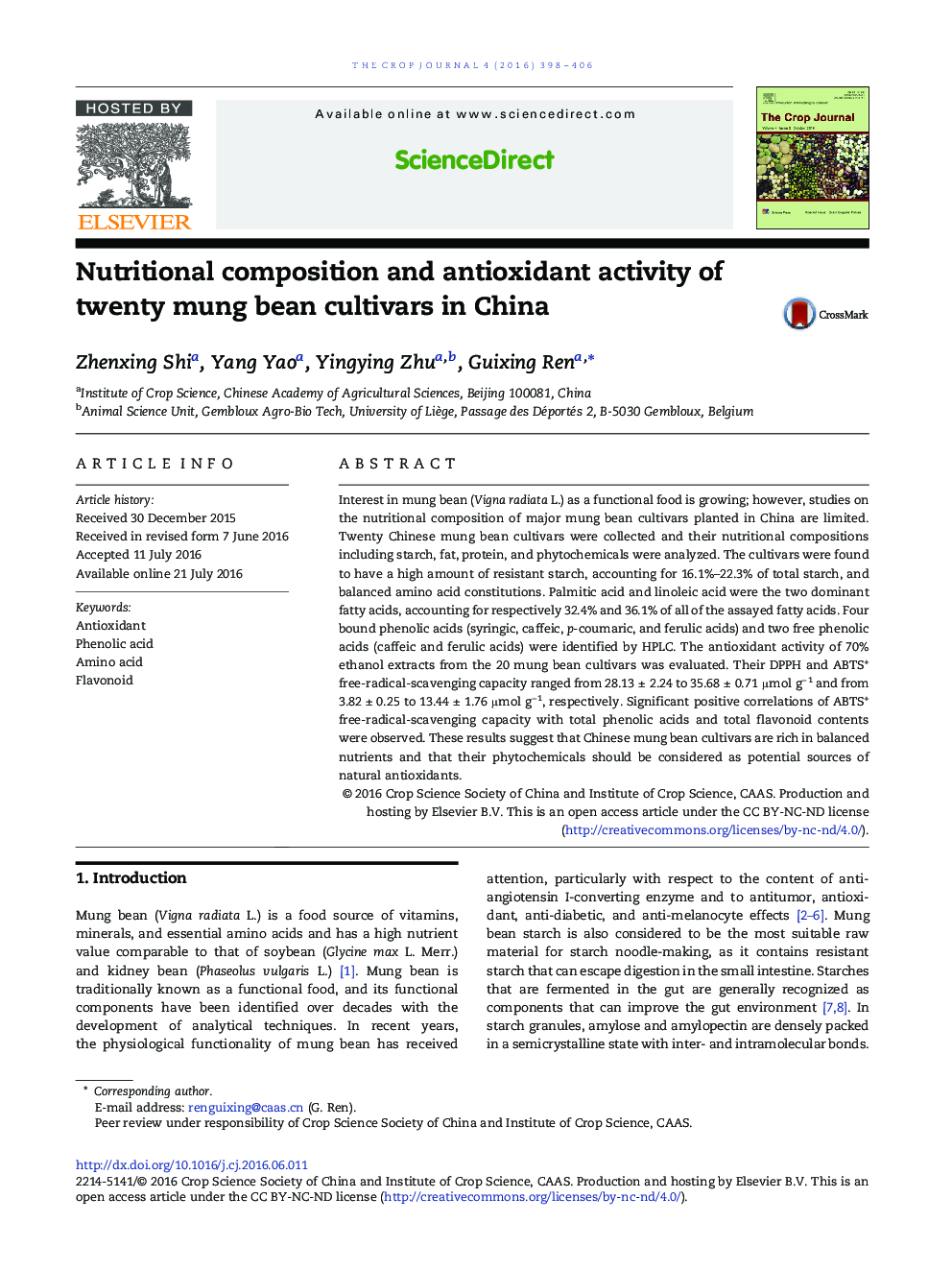| Article ID | Journal | Published Year | Pages | File Type |
|---|---|---|---|---|
| 5520804 | The Crop Journal | 2016 | 9 Pages |
Interest in mung bean (Vigna radiata L.) as a functional food is growing; however, studies on the nutritional composition of major mung bean cultivars planted in China are limited. Twenty Chinese mung bean cultivars were collected and their nutritional compositions including starch, fat, protein, and phytochemicals were analyzed. The cultivars were found to have a high amount of resistant starch, accounting for 16.1%-22.3% of total starch, and balanced amino acid constitutions. Palmitic acid and linoleic acid were the two dominant fatty acids, accounting for respectively 32.4% and 36.1% of all of the assayed fatty acids. Four bound phenolic acids (syringic, caffeic, p-coumaric, and ferulic acids) and two free phenolic acids (caffeic and ferulic acids) were identified by HPLC. The antioxidant activity of 70% ethanol extracts from the 20 mung bean cultivars was evaluated. Their DPPH and ABTS+ free-radical-scavenging capacity ranged from 28.13 ± 2.24 to 35.68 ± 0.71 μmol gâ 1 and from 3.82 ± 0.25 to 13.44 ± 1.76 μmol gâ 1, respectively. Significant positive correlations of ABTS+ free-radical-scavenging capacity with total phenolic acids and total flavonoid contents were observed. These results suggest that Chinese mung bean cultivars are rich in balanced nutrients and that their phytochemicals should be considered as potential sources of natural antioxidants.
